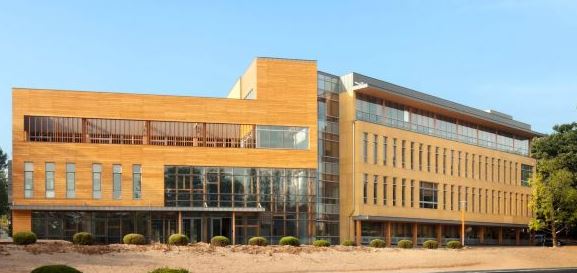
Forest of Genetic Resource Department in Suwon, Korea.
As South Korea moves to tighten emissions standards for new
buildings, including private apartments starting later this
month, policymakers are looking to timber-based construction as
a viable path toward carbon neutrality in the housing sector.
A new report from the Korea Land and Housing Corporation (LH)
underscores the urgency of shifting away from traditional
carbon-intensive materials like concrete and steel. Globally,
construction accounts for 42% of CO₂ emissions—27% from building
operations and 15% from materials and construction processes.
The government has committed to reducing building-sector
emissions by 32.8% by 2030 as part of its national climate
goals.
However, the report notes that traditional post-construction
efficiency upgrades—like insulation, lighting improvements, or
renewable energy adoption—offer diminishing returns. Instead,
the authors propose a strategic pivot toward timber-based
Off-Site Construction (OSC), where pre-fabricated wood
components are assembled on-site.
Timber offers superior insulation—seven times that of concrete
and 176 times that of steel—and stores carbon rather than
emitting it. Research cited in the report suggests that
replacing concrete frames with timber can reduce emissions by up
to 49%, with further savings possible through the use of
wood-based interior walls.
In economic terms, wood-based OSC also shortens construction
timelines and improves airtightness, enhancing energy efficiency
and overall housing quality. LH’s existing roadmap for modular
housing, however, currently focuses on concrete and steel, which
the report says runs counter to decarbonization goals.
As a practical first step, LH is considering replacing pre-cast
concrete apartment exteriors with timber-based OSC panels. The
study identifies ten government-led projects—including public
housing renovations and redevelopment agreements—as suitable
candidates for such pilot programs. The report also suggests
prioritizing wooden structures in facilities for seniors and
families with young children due to their environmental and
health benefits.
“With one-third of global industrial emissions coming from the
construction sector, South Korea cannot achieve its 2050 carbon
neutrality target without a radical transformation in building
materials,” the report concludes. “Timber-based architecture is
emerging as a crucial solution globally and domestically for
reducing and storing carbon.”
Source:
koreabizwire.com